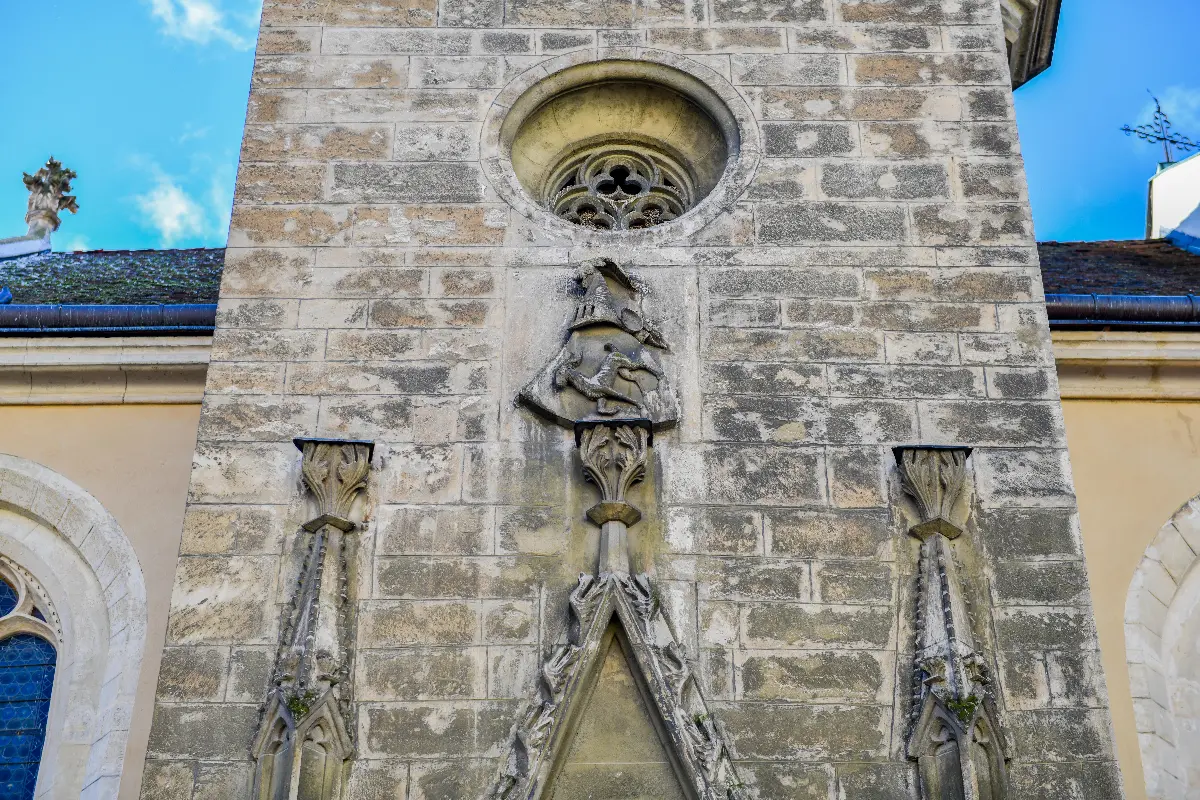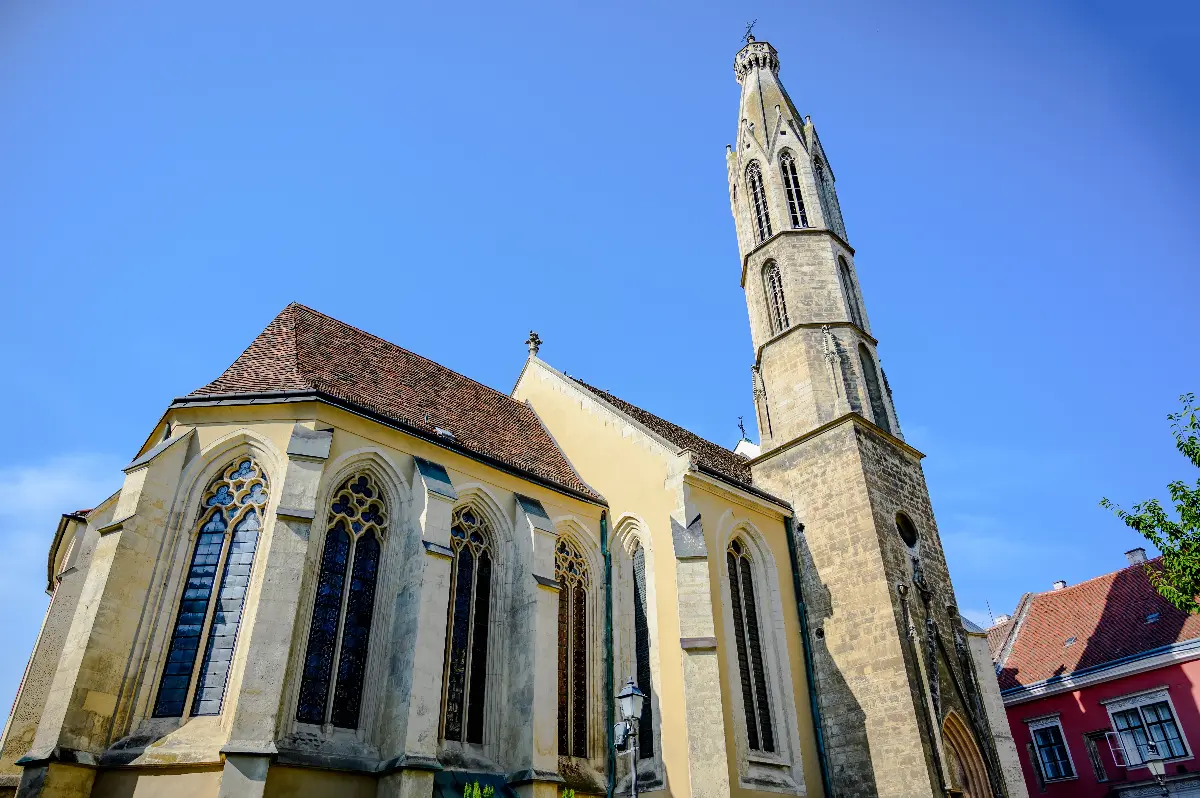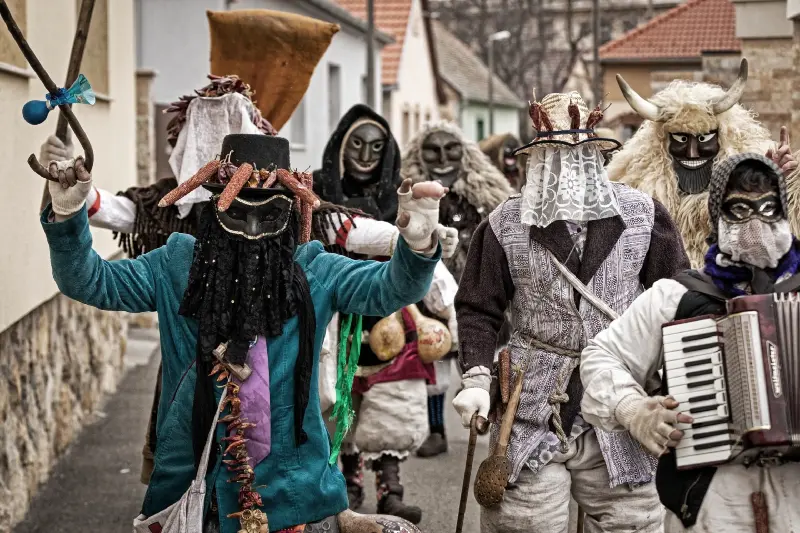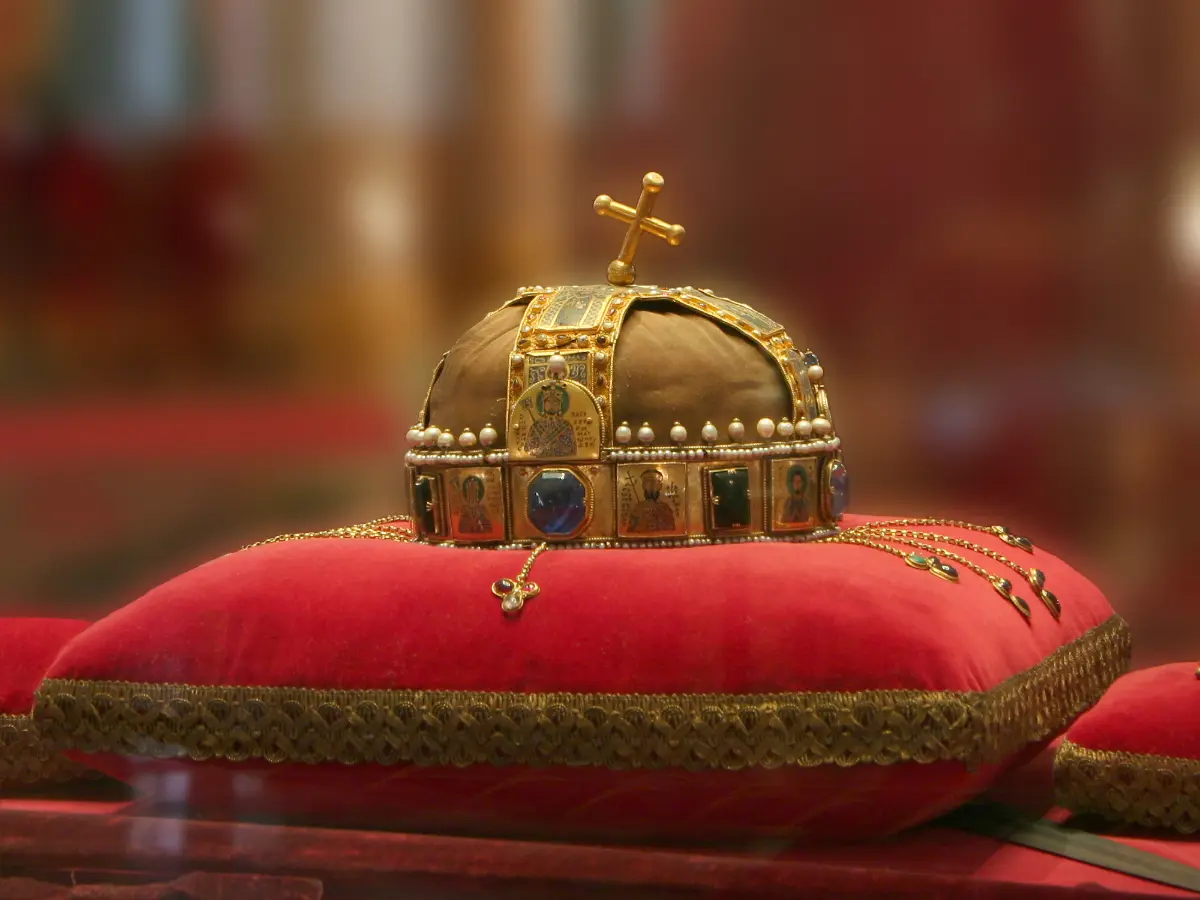
Helyszín címkék:
Coronation city – What does the history of Sopron reveal?
Käesz Judit
Sopron is the “forgotten” coronation city – even the people of Sopron are hardly aware of how important a role their city, that is well-known throughout Europe, used to play in the history of the national relic. The fact that the most prominent symbol of Hungarian statehood and history appeared in Sopron, has been almost completely forgotten by both the general public and the citizens of Sopron in recent centuries. Sopron was well-known in Europe in the 17th century: After Székesfehérvár and Bratislava, this settlement in Western Transdanubia was the third coronation city in Hungary, the memory of which has completely faded. Perhaps not even all the locals know that in 1622 Queen Gonzaga Eleonora, the wife of Ferdinand II, in 1625 King Ferdinand III, and in 1681 Queen Eleonore Magdalen, the third wife of Leopold I were crowned in the Goat church as the Hungarian king or queen. These facts are eloquent in themselves and managed to put an end to the accepted thesis that a Hungarian king can only be crowned by the Archbishop of Esztergom with the Holy Crown in Székesfehérvár.
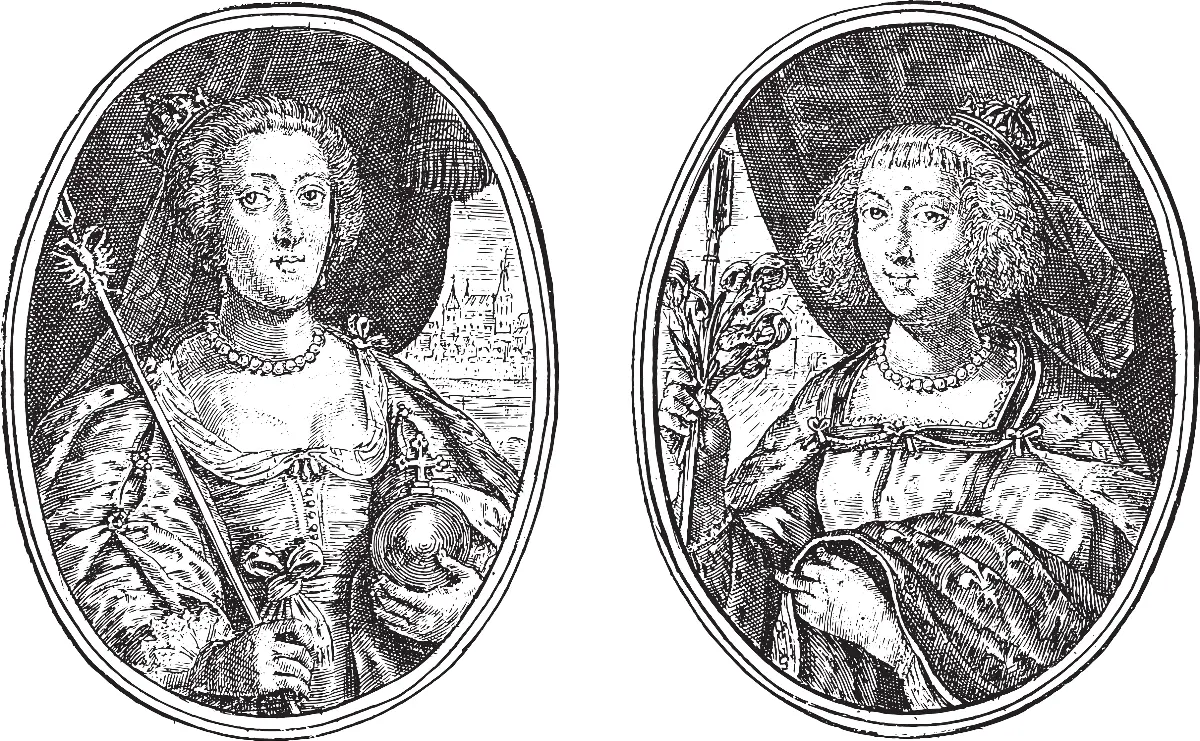
The church was the venue of many historical events, and a national assembly was held within its walls 5 times: in 1553, in 1622, in 1625, in 1634-35 and in 1681. in 1622 for a few months, the free royal city of Western Transdanubia became the centre of the Hungarian state and, partly the centre of the Central European Habsburg Monarchy. This year, Sopron was again nominated as the venue of the National Assembly. Bratislava, the coronation city was out of the question, as Gábor Bethlen’s troops threatened the process of the National Assembly and the coronation, moreover there was an outbreak of plague.
The Saint Crown four times: in 1463, 1622, 1625 and 1681 appeared here and was put on public display three times (in 1463, 1622, 1681), in contrast to the well-known coronation towns of Székesfehérvár and Bratislava. Of these, the most important event in the ceremonial sense was the coronation at the end of 1625 (later Ferdinand III was crowned on 8th December in the Goat church), while the coronation parliaments of 1622 and 1681 can be considered as politically significant. “The crown, which had been in the power of the emperor for 24 years, decorated with ribbons, is taken to Sopron with unparalleled splendour and solemnity, as if it had descended from heaven. Here, under the authority of the trustees, a call is issued and it is announced far away that those who are inspired by the love and respect of the reclaimed Holy Crown will have the opportunity to see and examine the crown in Sopron for three days, ”said Mátyás Hunyadi’s Italian historian, Antonio Bonfini, about the ceremony in which, the Hungarian crown was displayed when it was returned home in the summer of 1463 after almost a quarter of a century. For its role in reclaiming the Holy Crown back, the city received, mong other things, privileges confirmed in a royal charter, thanks to which Sopron in the coming decades unquestionably became the most prestigious free royal city.
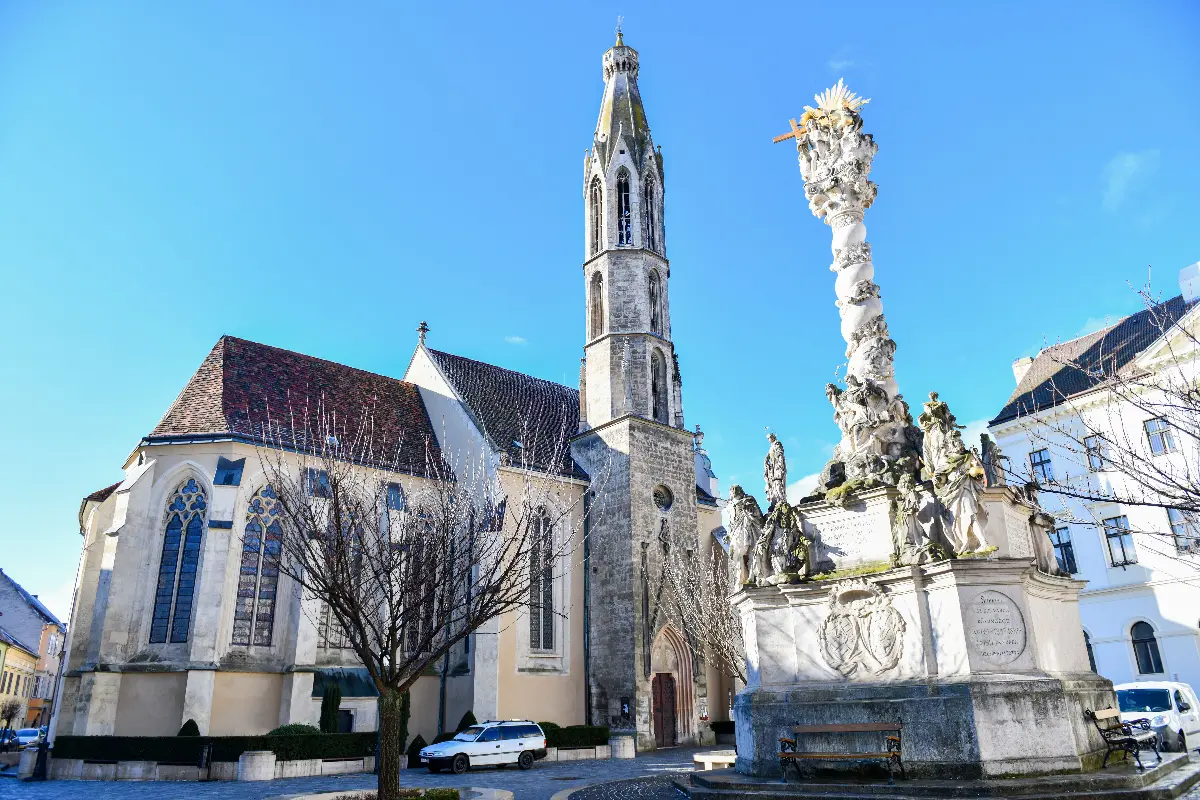
Just think about the uplifting experience of taking part in the coronation, even if people were flocking into join the crowd and grabbing only a commemorative coronation coin. Because at the time of the coronations, it was not ordinary halfpennies that were scattered among the people, but the commemorative coins minted specifically for the occasion. The south-eastern part of the Vienna Hill in Sopron has been officially known as Coronation Hill since 1862. On Coronation Hill, the memorial column erected in 1915 indicating the place where Ferdinand III performed the traditional sword cuts, proving that he was defending the country from the enemies. The inscriptions on it are as follows:
“The height above sea level of the Adriatic 251 m"
“This heap was the venue of a historic event”
“Habsburg III Ferdinand was crowned King of Hungary on the 8th Dec. 1625 with the sword of Saint Stephen, he performed the traditional sword-cutting from here in Sopron”
